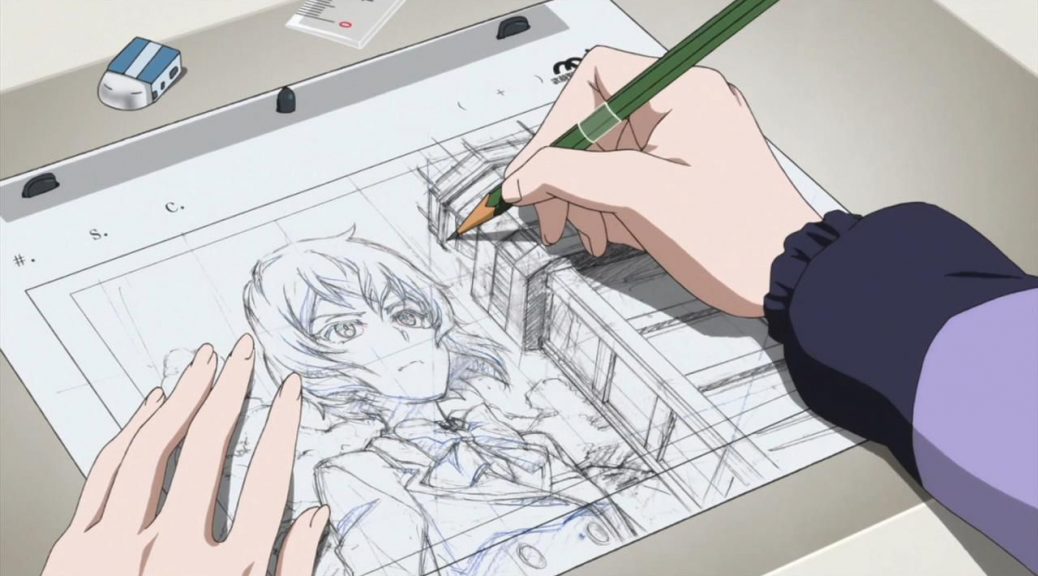Just How Anime is Made
Have you ever wondered how anime is made? For the majority of us, anime manufacturing is all smoke and also mirrors. The distance between the idea art as well as the finished work of art is the length of a regular 12-week period. Truth be informed, unless you're proficient in Japanese, the manufacturing procedure governing Japanese computer animation is shrouded in mystery. Trying to learn more will certainly lead you down a bunny opening of terms like key animator, in-between animator, animation supervisor, episode supervisor, art director, as well as personality developer. How anime is made in Japan is extremely different from just how you would certainly think; most of the times, it is much more of a liquid (read: disorderly) procedure than you would expect.
The Art of Animation
Computer animation production is a messy, messy affair. Chaotic organizing, ground timelines, missed out on due dates, and also rampant inexperience are all job-related dangers any individual working in a little, start-up environment is well-acquainted with.

Anime is additionally a labor of love as well as one that requires the abilities of many individuals, in addition to the perseverance of a pick few. Nevertheless, it is one that requires many, many actions. The success of even one episode is no small task, and one misstep can have alarming effects for the whole production. Dig deeper and also you'll discover manufacturing schedules and color-coded lists that are right stuff of problems. Numerous spread sheets, numerous trademarks.
I'll do my finest to give a comprehensive introduction of the process, laying out the significant steps as well as the significant gamers. In doing so, I wish to demonstrate how tough it is to make a decent anime, let alone a great one, while reigniting your love for the medium. Most importantly, apologies beforehand for any errors or errors; I am, never, an expert on anime production.
The Manufacturing Process (i.e. Manufacturing Risks).
Pre-production.
This is the planning and funding stage. The anime manufacturing firm (e.g. Aniplex, Bandai Visual, Kadokawa Shoten, Horse Canyon, Sony, Toho, Viz Media) is in charge of fronting prices for staffing, broadcasting, and also circulation. Basically, they pay studios to make it, television stations to air it, and also the licensor to distribute it domestically and also globally. Most of all, they accumulate the make money from the sales. Sometimes, multiple production business are involved in a solitary anime. Studios (e.g. A-1 Pictures, Bones, J.C. Staff, Kyoto Animation, Madhouse, Manufacturing I.G, Workshop Ghibli, Additional info Trigger) are the ones who staff, pay, and also produce the actual anime. If the anime is an initial idea, the workshop will occasionally assist front the prices.
Setting up the Group.
The director is the imaginative boss and is, typically, the one who staffs the program. When it pertains to staffing, each studio functions in a different way. Some have permanent in-house animators, colorists, editors, and also production desks, while others will certainly have a permanent group of core people from each division and also a huge network of consultants. Then there are the studios that contract out the job entirely to consultants.
Storyboards.
The director is normally in charge of the storyboards, as well. In long-running TV-anime, in contrast to seasonal anime, storyboards usually fall to various storyboarders. In a perfect world, the storyboards would certainly be totally finished before an episode goes into production. This would certainly give the rest of the personnel the possibility to expand a natural, fully recognized story; nevertheless, that seldom ever before takes place, and also frequently episodes are in-production as the storyboards are still being worked out. It's a headache, actually.
Layouts.
Successive is formats. Under the guidance of the supervisor, episode supervisor, and also occasionally manufacturer, the layout supervisor will certainly complete the information for cuts (scenes, generally determined by the use a single background). This involves preparing the primary computer animated image or "cels" (received cozy colors) against the backgrounds (received trendy colors) with descriptions of how the video camera ought to move. In other words, the format supervisor is framing each cut as well as checking out general composition.

Animation.
Once formats are done, the manufacturing assistant gives them to the vital animators. They're the ones that bring the pictures to life. The completed cuts after that go to the episode's animation supervisor, who look for uniformity and also quality. If the cuts obtain the stamp of approval, they most likely to the in-between animator. This work is usually outsourced to much less seasoned animators with less expensive costs. The in-between frameworks are sent to the in-between supervisor to see to it they follow the top quality and also structures of the vital animation. If a cut is denied at any phase, it is sent back for modifications.
Digitized.
Lastly, once the animation is done, the tinting team, overseen by the color designer, digitizes, cleanses, as well as shades the cuts. At this point, the cuts are described as cels (or digicels). The colorist places the colored cels versus the background art (as specified in the formats) and adds in any type of 3DCGs under the supervision of the 3DCG supervisor. The final stage of in-production is shooting, in which composition, unique effects, as well as editing are settled.
Post-Production.
With completion visible, the production aide sends the last cels to the recording supervisor for post-production. The recording director oversees the "dubbing" process in which the post-production groups add in the voice acting, sound impacts, and also music. That wraps up the life cycle of one cut in anime production. Lastly, at the end, the editor splices, integrates, edits, and then develops all the completed cuts. At the same time, the supervisor and episode director are signing in at each phase to ensure the ended up item lives up to their vision. The core routing group then examines the completed episode and provides responses or their final authorization.